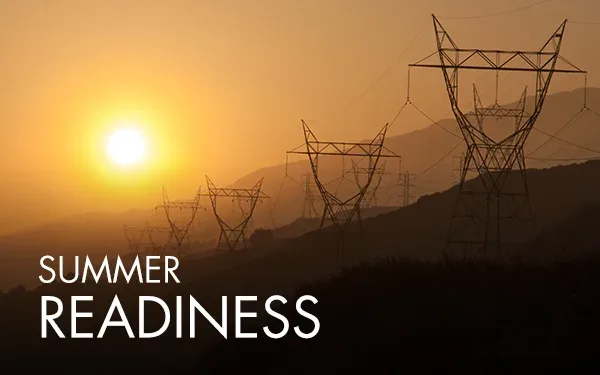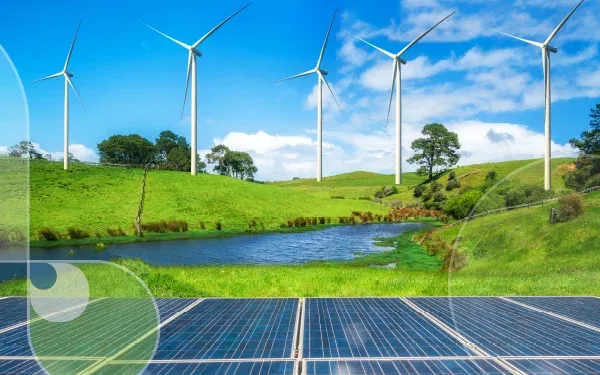The reasons for Flex Alerts


When the California ISO notifies the public that it plans to call a Flex Alert, it is signaling an operational call for assistance because it anticipates conditions on the grid to be sufficiently stressed the following day. Experience has shown that on such days voluntary conservation can help balance supply and demand and help prevent having to declare an emergency, and ultimately, rotating power outages.
To help reduce system stress, we strongly urge people to set their thermostats at 78 degrees or higher, if health permits, and avoid using major appliances and unnecessary lights during the early evening hours, typically from 4 p.m. to 9 p.m. During very hot days, demand for electricity remains high, primarily due to the air conditioners millions of us use to stay comfortable, while our available supply of energy is declining as the sun sets.
The ISO is committed to being a transparent organization. With additional actions taken recently to provide more information to the public regarding the supply and demand of power for the high-voltage transmission system, we have received a growing number of questions about the ISO’s Flex Alert criteria.
Some have asked—quite appropriately, since you can now easily track supply and demand on our website and mobile app—why we issue a Flex Alert and encourage people to change their behavior when there appears to be a significant margin between forecasted demand for power and the amount of available energy we expect under what’s known as Resource Adequacy capacity.
Resource Adequacy capacity refers to energy that is contractually obligated to be available to electricity providers under the state of California’s Resource Adequacy program. The program was put in place following the California electricity crisis of 2000 and 2001 to provide certainty to utilities that they actually have access to all the generating capacity customers need.
We recently added a set of Resource Adequacy graphs to our website—they will be on the mobile phone app soon—that make it easy to track how these supplies are trending. The graphs may also be a reason we have gotten more questions about the need to conserve when it is clear from the graphs that we still have capacity available.
It is important to keep in mind, however, that while these graphics are helpful in comparing the forecasted supply and load conditions, they do not account for other uncertainties that the ISO—as prudent and responsible managers of the electrical grid—must also consider. Some of those other uncertainties include:
- Changes in ambient conditions that can result in higher actual temperatures than previously forecast, which would lead to a greater need for power than the actual amount necessary to meet demand
- A possible risk to resources and supply that has not occurred and is therefore not yet accounted for in the available capacity calculations, such as a plant coming offline or an infrastructure problem that could restrict energy from being delivered where it is needed or changes in wind or cloud cover impacting production from wind and solar resources
- And finally, the potential risk to our ability to import energy from neighboring states or move it within California due to emergencies such as wildfires
All of these potential and not uncommon risks factor into the equation for anyone managing a large, complex power grid. In July, for instance, the Bootleg fire in southern Oregon caused two lines to trip that serve California. Suddenly and unexpectedly, we were short of capacity. We also are required by national operating standards to maintain a capacity reserve for just these types of unforeseen contingencies that come with the task of managing a modern electrical grid. You can think of it like a rainy day fund in budgeting. Instead of spending all the money that comes in, you put some aside to cover emergencies.
For all these reasons and more, as our engineers, forecasters and operations experts continuously analyze and assess a multitude of conditions affecting the grid, we may need to call on the public’s help to maintain reliability.
Flex Alerts put the state’s utilities and government officials on notice that conditions on the grid are strained. The alerts—and this summer’s public education campaign—provide an additional level of awareness for the need to reduce our energy use during hot evenings.
The public’s cooperation can alleviate the need for other emergency actions, including outages, to make available power stretch as far as possible, if a generator unexpectedly shuts down or a wildfire threatens transmission lines.
I want to assure you, the ISO only issues Flex Alerts when we believe they are absolutely essential to making sure we have enough energy in the system to balance supply and demand and keep the lights on for everyone.
We appreciate the public’s response and cooperation during these relatively brief periods of time when conservation is essential. New battery storage continues to be added to the electrical system this summer. More will be available over the next several years. This will allow us to store solar and wind power for dispatch during the evening when the sun has set and the winds die down. But in the short term, conservation will remain vital to help maintain electrical grid stability and keep us prepared for whatever unforeseen emergencies and other contingencies that may occur.

